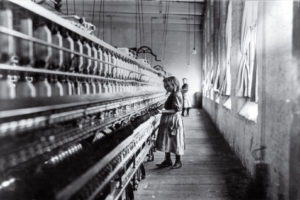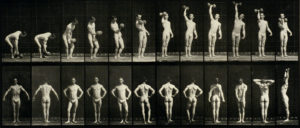PHOTOMANIA
The exhibition grows out of a class for freshmen, Photomania, that introduces new William & Mary students to photography and to undergraduate-level study in the liberal arts by combining readings and lectures in the history and theory of photography with hands-on demonstrations and original work in contemporary and historical photographic techniques. Students learn the fundamentals of photographic making alongside the achievements and development of historical photography. This combination of approaches to photography helps students see that photography is not just something given—a feature of their smartphones—but a historical, evolving dialogue between certain changing technical possibilities and corresponding array of uses or needs for those possibilities. At any given moment, photography is the meeting between the technologies and their uses.
Photomania students in the fall term of 2020 undertook a project: to reflect on photography’s relation to time. They were to organize these reflections around a set of four themes, which they devised. In a historical moment like no other we have known, but which bears comparison to others, like the pandemic of 1918-19; in a time that shivered instruction into synchronous and asynchronous modes; in a time in which time seems sometimes compressed and sometimes dilated; in a time that feels like crisis or stasis, depending on the day; in a time like this, students reflected on time.
The themes they devised explain ways the experience of time intersects the technologies of photography. The exhibition presents works that embody the themes in a stunning variety and quality of works. The themes are explained in the students’ words.
![]()
CONTINUITY
Students: Bayleigh Albert, Ben Greenberg, Clement Greco, Yuri Covington
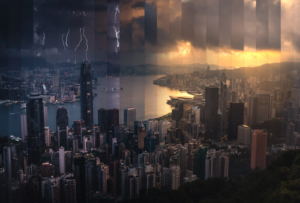
The world is constantly changing, and photography is a prime way of communicating this concept to people around the globe. Night turns to day, seasons change, people grow older, and structures age. Although humanity and its creations tend to compete with mother nature and her creations, everything in existence is bound together by time. But change means nothing without continuity. The concept of continuity and how it manifests itself in the world are what this section of the exhibition aims to demonstrate, photographically.

Featured in this portion of the show will be three main subjects: humans, nature, and structures. There will be a range of different photographs, all with unique compositions and stories. Rephotographic surveys, time slices, and side-by-side comparisons make visible and photographic ways time alters the physical world. This selection of photographs offers ways of thinking about the place of continuity in change, which is to say, in everything humanity encounters. Some capture the beauty of change, suggesting no reason to fear embracing it. On the other hand, there are photographs that reveal the brutal reality of decay, age, or destruction and compare it to what may have once been viewed as beauty or innocence. Each of these photographs uniquely reveals the power photography has to capture time in relation to continuity.
![]()
MOMENTS IN TIME
Students: Grace Harrell, Madeleine Harris, Marissa Ho, Luke Jenkusky
Since the beginning of time, humans have yearned for immortality. While art has changed throughout history, artists have always sought to immortalize moments through their works, though art’s likeness to the world in a moment in time was never exact due to human error, the limitations of representational media, and time constantly passing as art is made. With the development of photography, artists discovered a way to arrest time within an image. Though time is captured within one picture, the question remains whether or not the truth is also.
As objective as photography is in the sense that the image mirrors reality and is not altered in the creation of the photograph, the photograph is subjective as well. The subject of historical photographs evokes certain emotions about the event in the viewer that are inherently subjective, which allows the photograph to have subjective qualities even though it is an objective representation. Photographers choose what and how they take photos, and by choosing what and how to photograph something, they add their own bias to the work, thus removing any chance for a picture to have a truth that transcends perspectives.
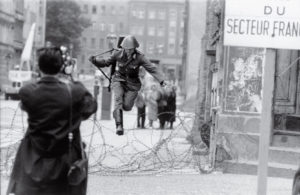
Photography captures truths of individuals. Through photographs, Moments in Time captures the lives of individuals at different turning points in history, allowing the audience to empathize with unfamiliar people and understand their truths. In the photographs included in the exhibit from artists such as Roger Fenton, Therese Frare, and many others, we can observe the harsh realities of war, protest, and natural disasters.
![]()
TO CATCH A MOVEMENT
Students: Naomi Marin, Sam Lee, DreSean Kendrick, Zachary Lutzky
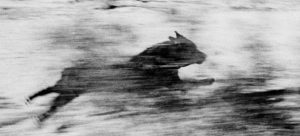
Photography began with a desire to capture a moment in time. William Henry Fox Talbot stated this desire perfectly: “How charming it would be if it were possible to cause these natural images to imprint themselves durably and remain fixed upon the paper! And why should it not be possible? I asked myself.” Photography could only capture at first what was still or slow enough for its long exposures. Then it struggled first toward instantaneity and then toward representing duration. When we think about photos and capturing movement, the mind turns to the idea of the moving picture and the invention of film. However, long exposure photography is able to capture movement in one image over time. Layering images of movements, whether they are clear or blurred, creates motion in a still image. The viewer can imagine being in the moment with the photographer. One can imagine the movement of the subjects or the landscape, and feel the desire to capture those moments to preserve time, freezing not an instant, but a whole span of the past.
First with chronophotography in the late nineteenth century, photographers such as Muybridge and Demeny used rapid shutter speeds to study motion in a technical manner, pioneering technology later used in film. Rapid exposures over an extended interval helped photography imagine movement. Long exposures, on the other hand, capture movements. For example, Gjon Mili used lights attached to objects to preserve in simultaneity the extended movements of artists, athletes, and dancers as they move through time and space. Capturing movement through time can be mind-boggling since photography can extend time past our human perception. Ultra-long exposures and extremely quick shutter speeds can permit photography to make visible what we cannot see with our naked eyes.
![]()
PHOTOGRAPHY OVER TIME
Students: Joshua Miner, Alyson Reynolds, Brennen Micheal, Quinn Osborne
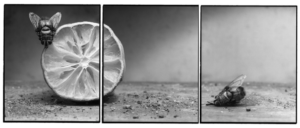
Over time, everything—tangible or abstract—moves toward decay. This part of the exhibition examines physical decay in nature, but also the decay of cultures, ideas, and people. In this way, it reveals the effect time has on the world around us, whether in a flash of light or a crumbling building. It looks at decay within the subject of the photographs, but also in the photograph itself.
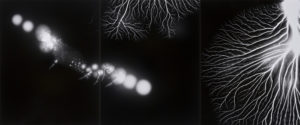
Decay is inevitable, whether it occurs in a millisecond or centuries, and the photos are arranged from the shortest time of decay (lightning) to longest (culture and cultural values), to best illustrate their lack of permanence. However, this series also examines the positive side of decay and illustrates the fact that decomposition does not need to be negative. It helps us remember to appreciate what exists in the present.
![]()
William and Mary’s students curated Photomania with guidance from their instructors Eliot Dudik, Lecturer of Art, and Charles Palermo, Professor of Art History. The virtual exhibition has been designed by Adriano Marinazzo, Curator of Digital Initiatives of the Muscarelle Museum of Art.


